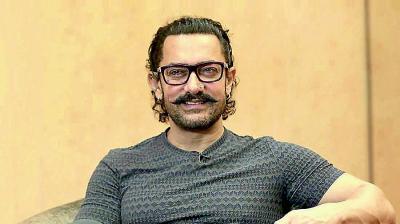The theatrical side of things
Indeed, upon reading the book, you feel like a student as Narayan dons the hat of a teacher explaining the many concepts of theatre and dance.
Padma Shri Shovana Narayan has already dazzled the world with her taal of Kathak. Now, she enriches us with her new book that delves into the aspect of theatre traditions, guru-shishya parampara and how she and her book are in-sync with the soil.
What comes to mind when one speaks of theatre? Is it the stage and the drama that transpires there? Or is the sheer tradition that has been carried forward from olden times? Well, we can’t speak for you but for Kathak legend Shovana Narayan, it is all of the above.
It is through her recent book, Indian Theatre Traditions: Drama, Music and Dance, we learn that she not only performs theatre but is spiritually inclined towards it. She reveals that the book was written way back in 2000, when she used to deliver lectures to students. Interestingly, it is based on the questions her students used to ask her during the classes. These, Narayan reveals, “were put down in a narrative form.”
Indeed, upon reading the book, you feel like a student as Narayan dons the hat of a teacher explaining the many concepts of theatre and dance.
She agrees to this, attributing it to the students’ constant questioning and their curiosity to learn about everything to do with dance. “The conversation about acoustics, light, architecture or even the seating of musicians, everything was discussed,” she points out.
But was writing the book a challenge for the Padma Shri awardee? To that, she answers in the negative. However, the question was about putting everything down succinctly in a narrative form. She continues, “It’s always lovely to have challenges, isn’t it? It’s wonderful and I welcome questions of students because you learn in that process. I enrich myself in the process.”
She believes that her book has a role to play in today’s time. She avers, “My book can play a role in telling people about their own, rich, cultural heritage that we have forgotten in our quest for daily living. Also, it makes (people) aware that India did have a very deep spiritual philosophy which is so diverse and inclusive.” Her book also highlights parallels between the Zend-Avesta and verses from the Sanskrit Rigveda. “How a similar word can have polar opposite meanings and yet, in so many verses, you find parallelisms because there were civilisations in different parts of the world, yet our Indian civilisation was rich,” she says.
“It is always good to revisit and renew our understanding of our own culture. It is the culture that we belong to, and that is evident even in our persona,” she believes. She continues, “If you look in your family background, your grandparents were more connected to the soil. I think the change came about in the last 100-200 years.”
Whatever art form it is, from Kathak to Ballet, it is always taught in the form of a guru-shishya (teacher-student) relationship. Her book exemplifies that. But what does the traditional guru-shishya way mean? She responds, “It means that one is imparting the technicalities. The technical skill can be imparted and learnt but you have to understand the aatma (spirit) of the dharma (here, discipline). If the guru is successful in communicating that and if the shishya or patra is willing and successful in receiving it, then that is the parampara (tradition).” But who is a guru, one wonders? To that, she responds, “A guru is someone who shows you a new path.”
Her book explores Hinduism in a unique way — one that is more to do with the spirit than the figures. Narayan details, “It is the way I understand and I have been brought up in. It is spiritual and I can find spirituality in every ‘ism’. We are bogged down by rituals that are entirely different. You can perform the rituals but you have to understand what they mean.”
Coming to the dance side of things, while Narayan divides Indian dance into classical and folk, she considers all of them to be national dances. “The word classical in Indian terminology means highly skilled. It is very individual and it has a format of presentation. There are certain rules and regulations of methodology and repertoire; you are taking on a very individualised, formalised and stylised skill and interpretation.” But in the case of folk, it means ‘from the people’, which is spontaneous and skilled, but not necessarily in a format.
Narayan feels that a strong connection exists between her, her roots and the book. She explains, “I am living and breathing my Kathak in my persona and the way I behave and think reflects the philosophy of my country. My performance reflects deep cultural heritage, and the book is just putting it in black and white; so I am living and breathing the cultural and spiritual philosophy of my soil.”
In other words, the dancer is “just sharing my experiences,” as she reveals. But is she satisfied with the finished product? To that she answers, “There is no such thing as satisfaction or dissatisfaction. If I have to write a similar kind of a book, I may have something different and something more. Every moment I am learning something new.”
And, finally, does she have a message to give? “I would not like to give a message but I would like to say that I hope people read the book. And if they learn something, it’s beautiful,” she concludes.


















